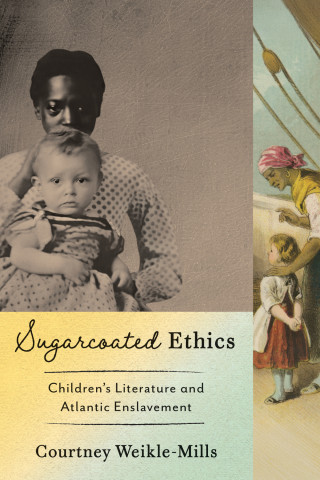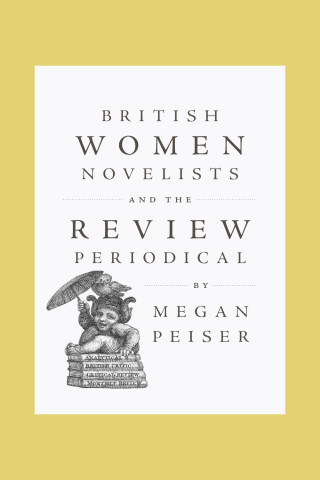
Reviews
This remarkably learned work argues that... readers need to understand the technicalities of atonement, incarnation, redemption, and mediation to appreciate the parodia sacra of Hogarth's famous series, The Harlot's Progress.
This book is everywhere inventive and suggestive, a pleasure to read through but also to use discontinuously for its erudite commentary on particular texts, prints and paintings.
An incomparably rich and suggestive book... It should be required reading for all those scholars of the eighteenth century—from whatever discipline of the humanities—who are interested in ideas and the widening of horizons.
Even as it advances a provocative argument, Hogarth's Harlot enlarges our enjoyment of Hogarth and his rowdy times.
Ronald Paulson is the world's major scholar on the correspondences between literary and visual satire. In this book we see a senior scholar at the height of his powers engaged in rescension while striking out into new territory. His scholarship is impeccable and accessible and will be greatly appreciated by scholars and students of the eighteenth century and the art-loving public.
Book Details
List of Illustrations
Preface
Part I: Introduction: The Sacrament of the Eucharist
Chapter 1. Redemption/Atonement
Chapter 2. Christological Typology
Chapter 3. Incarnation
Chapter 4. Reformation
List of Illustrations
Preface
Part I: Introduction: The Sacrament of the Eucharist
Chapter 1. Redemption/Atonement
Chapter 2. Christological Typology
Chapter 3. Incarnation
Chapter 4. Reformation/Iconoclasm
Chapter 5. Restoration
Chapter 6. Paradise Lost
Chapter 7. Travesty/Burlesque
Chapter 8. Deism and Aesthetics
Chapter 9. Spiritual Pilgrimage
Part II: Blasphemy and Belief: The Case of A Harlot's Progress
Chapter 10. The Case
Chapter 11. Blasphemy
Chapter 12. Burlesque
Chapter 13. The Joesph-Mary Joke
Chapter 14. Protestant Antipopery
Chapter 15. English Antipopish Art
Chapter 16. Dissenter Anticlericalism/Old Whig Politics
Chapter 17. Opposition Politics: Swift, Nicholas Amhurst, and Bishop Hoadly
Chapter 18. Cunicularii: The Nativity Parodied
Chapter 19. Deism: Thomas Woolston
Chapter 20. Antisemitism
Part III: Atonement
Chapter 21. The Problem of Vicarious Atonement
Chapter 22. Milton's Critique
Chapter 23. The Empiricist Critique
Chapter 24. Substitution: The Harlot Died for Our Sins
Chapter 25. The Blemished Lamb
Chapter 26. The Object of Sexual Passion and Devotion
Chapter 27. Mother and Son
Chapter 28. The Replacement of God: Deism, Hoadly, and Antinomianism
Chapter 29. Typology and Allegory: Mary and Hercules
Chapter 30. Grace: Choice and Chance
Chapter 31. The Harlot's Last Supper
Chapter 32. Jane Shore and Sarah Millwood
Chapter 33. Efficacious Atonement: West's Death of General Wolfe
Part IV: Incarnation
Chapter 34. Mary's Magnificat
Chapter 35. Christ in Us: James Nayler
Chapter 36. Incarnation in Art
Chapter 37. Aesthetics: The "Living Woman"
Chapter 38. Libertinism: John Wilkes and the Black Mass
Chapter 39. Wright of Derby and Gainsborough
Part V: Redemption
Chapter 40. Milton's Poetic Redemption
Chapter 41. Poetic Versus Aesthetics: Pope's Belinda
Chapter 42. Redemption and Restoration/Recovery: The Dunciad
Chapter 43. Swift's Anti-aesthetics: The Harlot Celia
Chapter 44. Blushes and Blemishes: Belinda and the Harlot
Chapter 45. Mock Redeemers
Part VI: Mediation
Chapter 46. Redemption and Mediation
Chapter 47. Handel's English Sacred Oratorio: The Mediation of Esther
Chapter 48. Jephtha's Daughter: Human Sacrifice Mediated
Chapter 49. "The Mediatorship of the Son of God": Jonathan Richardson
Chapter 50. The Mediation of "Living Woman"
Chapter 51. Paul, Drusilla, and Felix
Chapter 52. Good and Bad Mediators
Chapter 53. The Connoisseurs' Telescope
Chapter 54. Ganymede: Christ and Antinous
Chapter 55. Zoffany: The Artist and the Connoisseur
Part VII: Resurrection
Chapter 56. Soteriology and Eschatology
Chapter 57. Roubiliac's Funerary Sculptures
Chapter 58. Gofarth's Resurrections
Chapter 59. Demotic Imagery of Death and Resurrection
Chapter 60. Apocalypse: The Conversion of the Jews
Part VIII: Smart: The Magnificat and Jubilate Agno
Chapter 61. The Harlot's Cat
Chapter 62. Smart's Magnifi-cat
Chapter 63. Mary Midnight
Chapter 64. David the Psalmist
Chapter 65. Both Magnificat and Jubilate Agno
Chapter 66. Between Resurrection and Redemption
Chapter 67. Redemption of the Unclean
Chapter 68. The Cornu-copia
Part IX: Blake: The Harlot and the Lamb
Chapter 69. "The Youthful Harlot's Curse"
Chapter 70. Mary, Rahab, and Tirzah
Chapter 71. The Human Form Divine
Chapter 72. Blake and Milton
Chapter 73. Blake and Hogarth
Notes
Index





